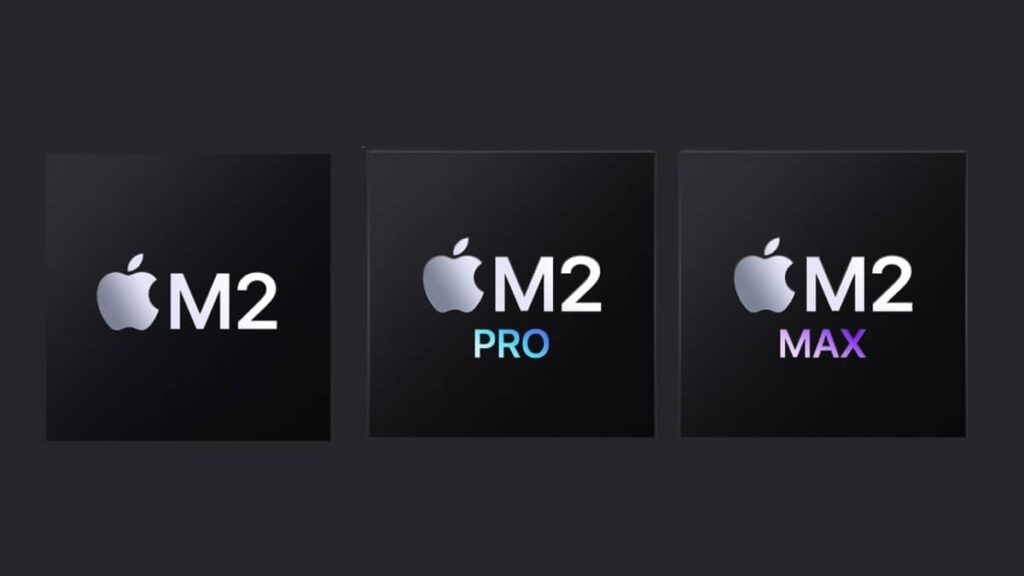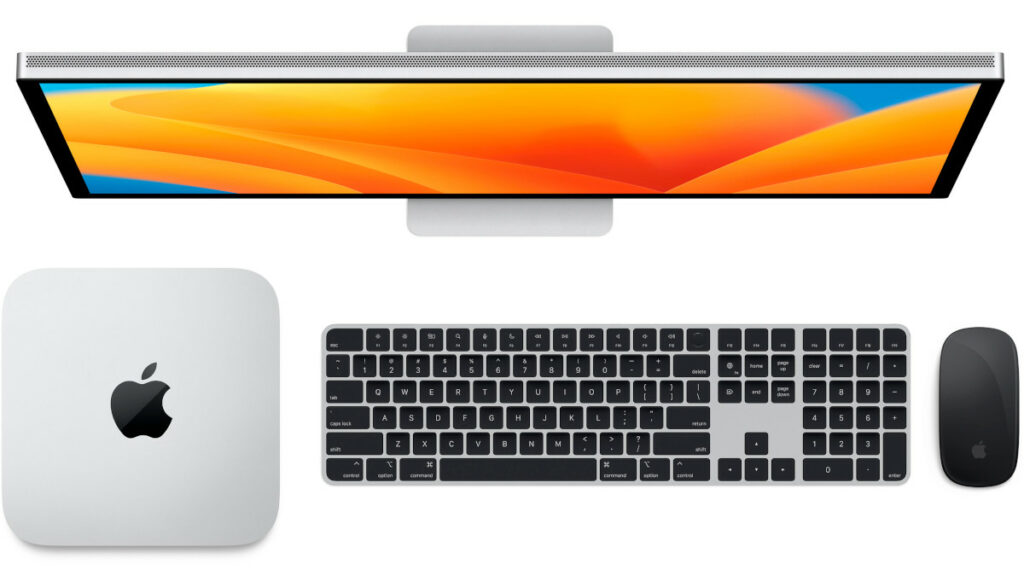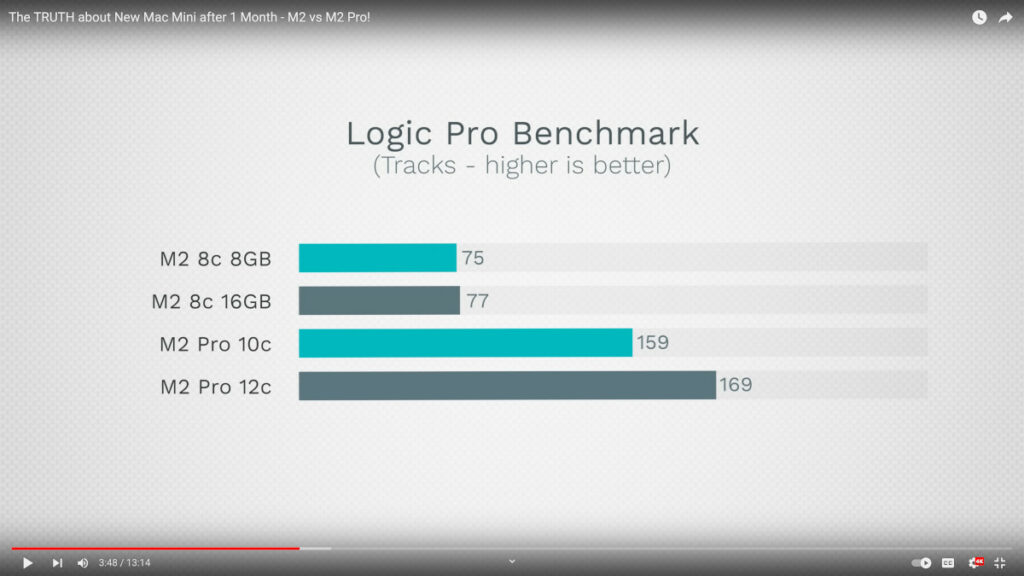Apple M2 Processor Series

Understanding the four Apple M2 Series processors
Apple M2
Apple announced the M2 SoC on June 6, 2022, at WWDC, along with the new MacBook Air and the new 13-inch MacBook Pro and later the iPad Pro (6th generation). It is the successor to the Apple M1. The M2 is made with TSMC’s “Enhanced 5-nanometer technology” N5P process and contains 20 billion transistors, a 25% increase from the previous generation M1. The M2 can be configured with up to 24 gigabytes of RAM and 2 terabytes of storage. It has 8 CPU cores (4 performance and 4 efficiency) and up to 10 GPU cores. The M2 also increases the memory bandwidth to 100 GB/s. Apple claims CPU improvements up to 18% and GPU improvements up to 35% compared to the previous M1.
Apple M2 Pro
The M2 Pro is a more powerful version of the M2, with six to eight performance cores, four efficiency cores, 16 to 19 core GPU, 16 Apple Next Generation Neural Engine cores, up to 32 GBs of unified RAM with up to 200 GB/s memory bandwidth, and over 40 billion transistors, 20 percent more than the M1 Pro and twice the M2. It was announced on January 17, 2023 in a press release and it is used in the 14 and 16 inch 2023 MacBook Pro (Apple silicon) as well as the Mac Mini. Apple claims the CPU performance on the M2 Pro is 20 percent faster than the M1 Pro and the GPU is 30 percent faster than the one on the M1 Pro.
Apple M2 Max
The M2 Max is a larger more powerful version of the M2 Pro, with eight performance cores, four efficiency cores, 30 to 38 core GPU, 16 Apple Next Generation Neural Engine cores, up to 96GBs of unified RAM with up to 400 GB/s memory bandwidth, and over 67 billion transistors, 10 billion more than the M1 Max and 3x the M2. It was announced on January 17, 2023 in a press release and it is used in the 14 and 16 inch 2023 MacBook Pro (Apple silicon). Apple claims the CPU performance on the M2 Max is 20 percent faster that M1 Max and the GPU is 30 percent faster than the M1 Max. According to Apple, “the M2 Max is the most powerful and efficient chip in a pro laptop”.
Apple M2 Ultra
The M2 Ultra consists of two M2 Max dies connected together by a silicon interposer through Apple’s UltraFusion technology. It has 134 billion transistors, 16 performance cores, 8 efficiency cores, 60 to 76 GPU cores and 32 Neural Engine cores; it can be configured with up to 192 GB unified RAM of 800 GB/s memory bandwidth. It was announced on June 5, 2023, as an optional upgrade for the Mac Studio and the sole processor for the Apple silicon Mac Pro. Apple claims the M1 Ultra can deliver up to 22 streams of 8K ProRes video playback.
Wikipedia
The brilliance of Apple silicon is the components of each one are the same. There are just more or less of them in each type.
Performance of the various M2 processors really boils down to the base M2 processor performance.
The base M2 has been in the MacBook Air and available since the beginning of July 2022. The Mac mini refreshed its lineup to the M2 and M2 Pro in Q1 of 2023.
The 14″ & 16″ MacBook Pros upgraded to the M2 Pro and M2 Max in Q1 of 2023.
The Mac Studio upgraded to the M2 Max and M2 Ultra, and the Mac Pro upgraded to M2 Ultra in June of 2023.
Apple is possibly trying to move M Series processor upgrades to an annual rhythm like the A Series processors for iPhones etc. The M2 Extreme has been reportedly scrapped. Rumors say the 24″ iMac will not get released in a M2 iteration.
By the end of 2023, the Apple M1 Processor Series should be history and fully replaced by the Apple M2 and M3 Processor Series in newly released products.
M2, M2 Pro, M2 Max, and M2 Ultra specifications
While M2, M2 Pro and M2 Max are distinct designs, the M2 Ultra is essentially two interconnected M2 Maxs (as the M1 Ultra was two M1 Maxs).
** If you are browsing this page from a phone, you may want to view the following chart in landscape mode.
| Component | M2 | M2 Pro | M2 Max | M2 Ultra |
| Efficiency CPU Cores | 4 | 4 | 4 | 8 |
| Efficiency Clock | 2.4GHz | 2.4GHz | 2.4GHz | 2.4GHz |
| Performance CPU Cores | 4 | 6 or 8 | 8 | 16 |
| Performance Clock | 3.5GHz | 3.5GHz | 3.5GHz | 3.5GHz |
| Neural Engine Cores | 16 | 16 | 16 | 32 |
| GPU Cores options | 8 or 10 | 16 or 19 | 30 or 38 | 60 or 76 |
| Unified Memory options | 8GB 16GB 24GB | 16GB 32GB | 32GB 64GB 96GB | 64GB 128GB 192GB |
| Memory Bandwidth | 100GB/s | 200GB/s | 400GB/s | 800GB/s |
| Video Decode Engines | 1 | 1 | 1 | 2 |
| Video Encode Engines | 1 | 1 | 2 | 4 |
| ProRes Encode-Decode Engines | 1 | 1 | 2 | 4 |
Assuming a less than 2 year processor life cycle, before the end of 2024 the M2 Series should be history and fully replaced by the Apple M3 Processor Series in newly released products.
CPU & GPU Performance Benchmarks
Buying an Apple M2 Series computer
Any Apple M2 Series computer will be a joyful experience compared to music and video production on Intel hardware. Highly recommended to get at least 16GB of memory and 512GB storage if you select an M2 Series system.
So far, there are 8 basic form factors of Apple macOS systems with M2 Series processors, 5 laptops and 3 desktops.
- 13″ MacBook Air M2
- 15″ MacBook Air M2
- 13″ MacBook Pro M2
- 14″ MacBook Pro M2 Pro & M2 Max
- 16″ MacBook Pro M2 Pro & M2 Max
- Mac mini M2 & M2 Pro
- Mac Studio M2 Max & M2 Ultra
- Mac Pro M2 Ultra
Thanks!
-Yehuda
Useful Links
Apple related pages
Updated periodically – Apple Silicon is the DAW standard
Updated periodically – Apple Mac Studio M1 Max & M1 Ultra
Updated periodically – Apple Mac Studio M2 Max & M2 Ultra
Updated periodically – Apple Mac Studio M4 Max & M4 Ultra
Updated periodically – Apple MacBook Pro M1 Pro & M1 Max
Updated periodically – Apple MacBook Pro M2 Pro & M2 Max
Updated periodically – Apple MacBook Pro M3 Pro & M3 Max
Updated periodically – Apple MacBook Pro M4 Pro & M4 Max
Updated periodically – Apple Mac Pro M2 Ultra
Updated periodically – Apple Mac Pro M4 Ultra & M4 Extreme
Updated periodically – Apple Mac mini M1
Updated periodically – Apple Mac mini M2 & M2 Pro
Updated periodically – Apple Mac mini M4 & M4 Pro
Updated periodically – Apple Studio Display
Updated periodically – Apple M1 Processor Series
Updated periodically – Apple M2 Processor Series
Updated periodically – Apple M3 Processor Series
Updated periodically – Apple M4 Processor Series
Follow on Mastodon – TurtleIsland.social/@Yehuda
This page is subject to content updates/additions. If you think any content should be updated or added, please leave a private comment on Mastodon – TurtleIsland.social/@Yehuda.



